Welcome wildlife into your garden |
||||||
|
We all love seeing birds, hedgehogs and butterflies in the garden, but with their natural habitat shrinking all the time, many of them need our help to survive. We can use our gardens to provide a safe haven – especially if we turn them into organic, pesticide-free zones. Here’s how you can do your bit. |
||||||
1. Cultivate climbers |
||||||
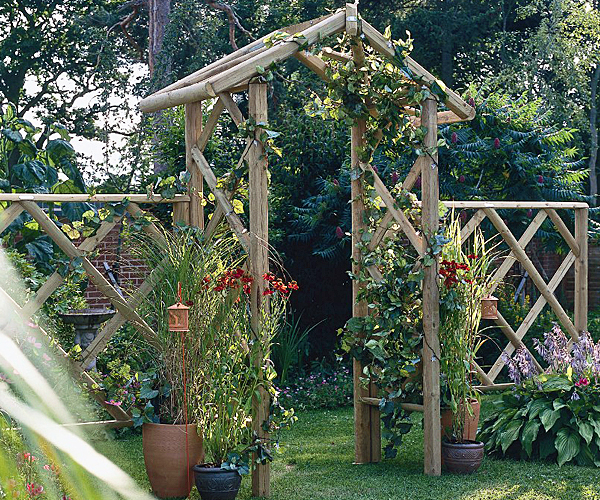 |
Clematis, rambling roses and virginia creeper can all make desirable habitats at varying heights, and will attract birds, bees and butterflies to feed. Training these climbing plants over arches, pergolas or arbours will make an attractive, fragrant feature for your garden too, particularly if you combine it with a seating area. Ivy is another useful plant, with nutritious seeds and flowers providing a reliable source of pollen. And because it's evergreen, it offers a refuge for wildlife all year round. However, ivy is extremely vigorous and fast-growing. Left unchecked it could take over the whole garden and possibly your house walls as well, so you will need to regularly clip it back after the nesting season. |
|||||
2. Give birds a boost |
||||||
|
Providing a safe refuge can make a huge difference to the survival of our garden birds. Site your nest box in a sheltered spot, out of reach of any predators. If you're putting up a new shed or summerhouse, try and leave enough room for a bird box between it and the neighbouring wall or fence. A feeding station is a must. Seeds, nuts, mealworms and suet are all good sources of protein and will ensure your feathered friends keep on visiting throughout the year. If space permits, planting dense bushes such as forsythia or hydrangea nearby can benefit small birds such as sparrows and blue tits. They will be able to dart in and out to feed, safe from lurking cats. If you don't have a bird table, hanging a feeder from a bracket attached to your shed wall will be just as effective. |
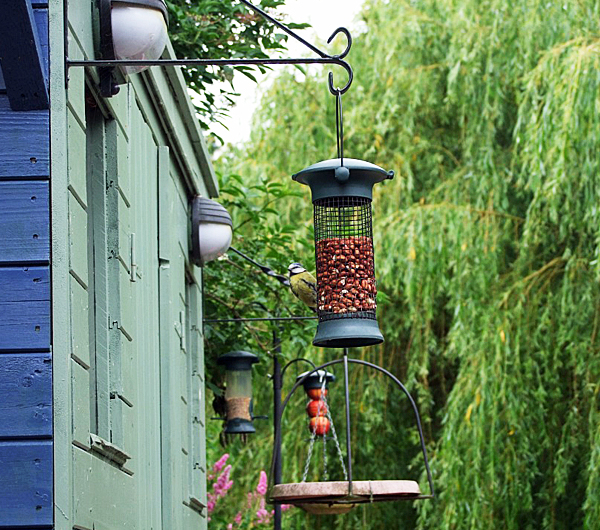 |
|||||
3. Get clever with compost |
||||||
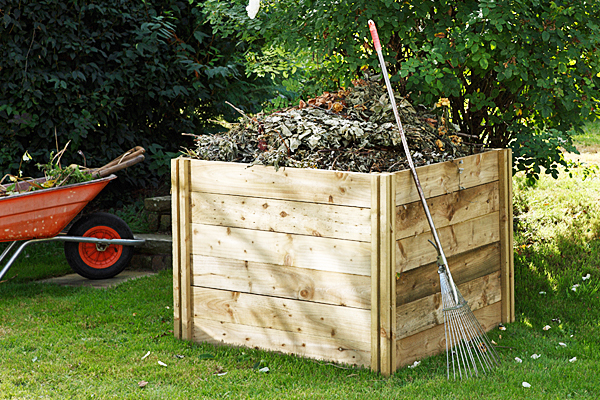 |
Composters are a great way to feed your garden as well as making a good home for worms, frogs, woodlice, mushrooms, spiders, hibernating hedgehogs and even grass snakes. When the compost has turned to mulch - which may take anything from a few months to a year - spread it over your flower and vegetable beds to give the plants a nutritious boost. Always check for signs of wildlife (such as droppings or entrance holes) before disturbing the compost, and try not to empty the bin before the spring to avoid accidentally tipping out any hibernating creatures. |
|||||
4. Help a hedgehog |
||||||
|
Hedgehogs are struggling to survive nowadays with the loss of countryside and increased use of pesticides. You can help them build up their reserves for winter by leaving out meaty cat or dog food, sunflower seeds, dried mealworms and chopped nuts. Never feed them bread and milk as this can lead to potentially fatal stomach upsets. And don't forget a bowl of water. A wooden box for hibernation can also be a great help - advice on building one is available from the British Hedgehog Preservation Society. Hedgehogs can travel several miles a night foraging for food, but often find it difficult to navigate between gardens. Creating a five-inch gap at the base of your fence will widen their territory and give them a bigger choice of places to feed and take shelter. |
 |
|||||
5. Sling out the slug pellets |
||||||
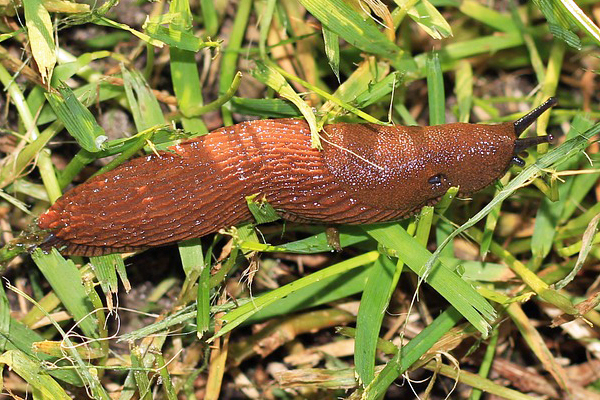 |
Avoid all pesticides, particularly slug pellets. These can be extremely harmful for hedgehogs, as many die after eating slugs with poison inside them. Far better to use a beer trap - bury half an empty grapefruit in a flowerbed and fill it up with beer. Slugs and snails will be attracted by the smell, fall in and drown. Alternatively, you could just leave these pests for the birds and hedgehogs to deal with. After all, they form a handy source of protein. |
|||||
6. Make a splash |
||||||
|
Any water in the garden will encourage wildlife. A pond is a great resource for newts, frogs and toads, as well as for birds to bathe in and drink. It can also support a huge variety of insects including dragonflies, water beetles, pond-skaters, tadpoles, water boatmen and mayflies. Make sure you include some plants along one side so visiting wildlife can take cover, and a gently sloping beach to provide safe access. This is particularly important for hedgehogs, who love swimming but sometimes find it hard to climb out of the water. Don't be tempted to add fish to your pond, as they will gobble up the insects and tadpoles. |
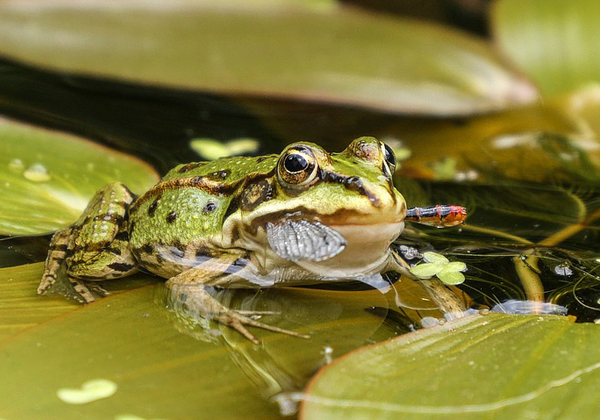 |
|||||
7. Fill up with flowers |
||||||
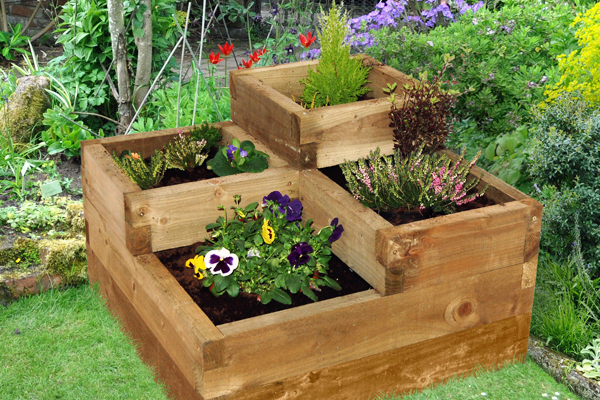 |
To attract bees and butterflies, plant as many flowers as possible. If you run out of space in your borders or only have a courtyard garden, you can use raised beds and planters to expand your growing area. Try to cultivate plants that flower at different times of year, so a source of nectar and berries is always available. Marigolds, cornflowers, nasturtiums, wallflowers, asters, calendulas and buddhleia are just a few examples of flowers and shrubs that bees and butterflies love. The little creatures will repay you many times over by pollinating your plants and fruit trees. |
|||||
8. Grow, don't mow |
||||||
|
Manicured, over-tidy gardens make it extremely difficult for wildlife to find food and shelter. If possible, let a corner of your garden become overgrown. Hedgehogs and other small creatures can then use twigs, fallen leaves and dead vegetation to build their nests, while bees and butterflies will be attracted to weeds and wild flowers. Unkempt areas also provide a home for the insects, slugs and snails that birds and hedgehogs need to feed on. |
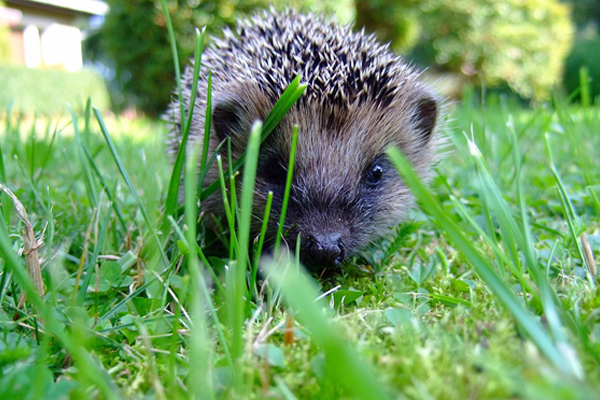 |
|||||







